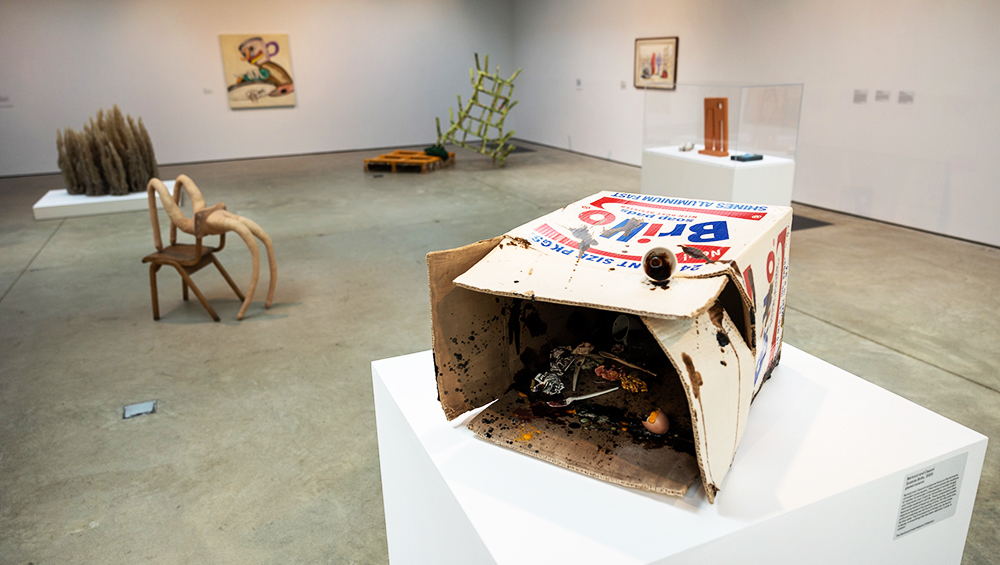
Immortal Apples, Eternal Eggs, installation view, Hastings Contemporary. Photo: Chip Creative.
Hastings Contemporary, Hastings
21 September 2024 – 16 March 2025
by SABINE CASPARIE
Glancing around the first and largest room of this seven-room exhibition, which combines more than 50 artworks from the David and Indré Roberts collection and the Ingram collection, many words crossed my mind: ready-mades, bodies, furniture, abstraction. What did not cross my mind were the words “still life”. The exhibition’s title, Immortal Apples, Eternal Eggs, is taken from a letter by Virginia Woolf, describing the studio bedsit of her close friend, Roger Fry. “[O]n the table, protected by its placard, was the still life – those symbols of detachment, those tokens of spiritual reality immune from destruction, the immortal apples, the eternal eggs.” And yet this first room hints that we are going to witness something different from the still lives of the past.
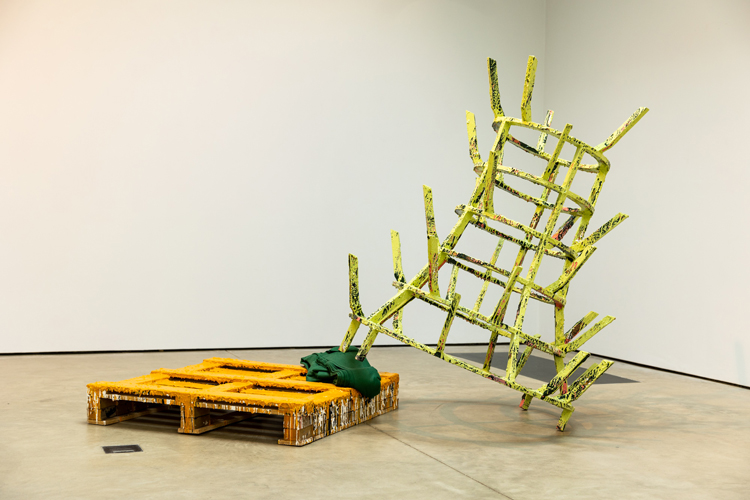
Phyllida Barlow, Untitled (Bottle Rack), 2006. Timber, paint, plaster, felt. Courtesy of The David and Indrė Roberts Collection and the artist. Photo: Chip Creative.
Phyllida Barlow’s Untitled (Bottle Rack) (2006), a cylindrical construction dripping with green paint and resting on a wooden crate, is based on Marcel Duchamp’s ready-made Bottle Rack, but rather than representing a found object, Barlow creates a giant version using cheap, everyday materials. Opposite, Bluffs (2006), a sculpture by Tara Donovan has a similar lime-green hue; it is reminiscent of a formation of icicles but on a closer look turns out to be made of transparent buttons. Sarah Lucas’s Grace (2006) features the artist’s well-known nylon-clad legs nonchalantly draped over a chair, as if they are defying us to leave our preconceived ideas at the door. We are asked to swipe away our dusty categorisations with Susan Collis’s Waltzer (2007), a broom that looks as if it was left in the room by accident, but in fact contains several shiny pearls and gems braided into the dry, black hairs, bringing a sense of mystery and light-heartedness. Reframing what we think we know about still life turns out to be the main aim of the show.
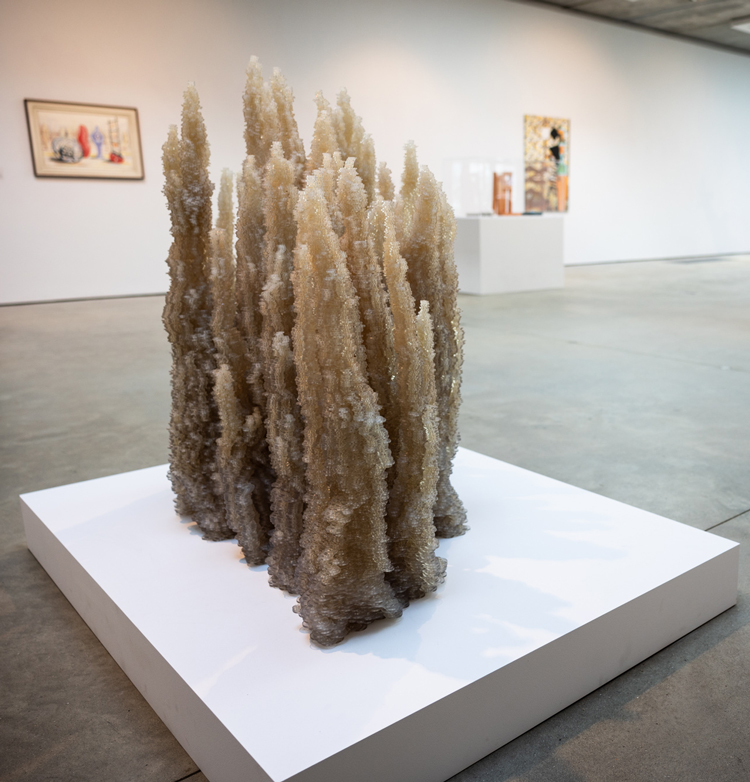
Tara Donovan, Bluffs, 2006. Buttons and glue. Courtesy of The David and Indrė Roberts Collection and the artist. Photo: Chip Creative.
To anchor us in the art-historical tradition, with still life at the bottom of the hierarchy of genres, we proceed through a second room of works that are mostly from the Ingram Collection: a small Anthony Caro sculpture, a surrealist painting by Mark Gertler containing the eponymous apples. From there on, however, both subject matter and medium are wide open again. In Emma Bennett’s painting The Hare (2006), a hare and flowers have been deconstructed and are floating against a deep black background.
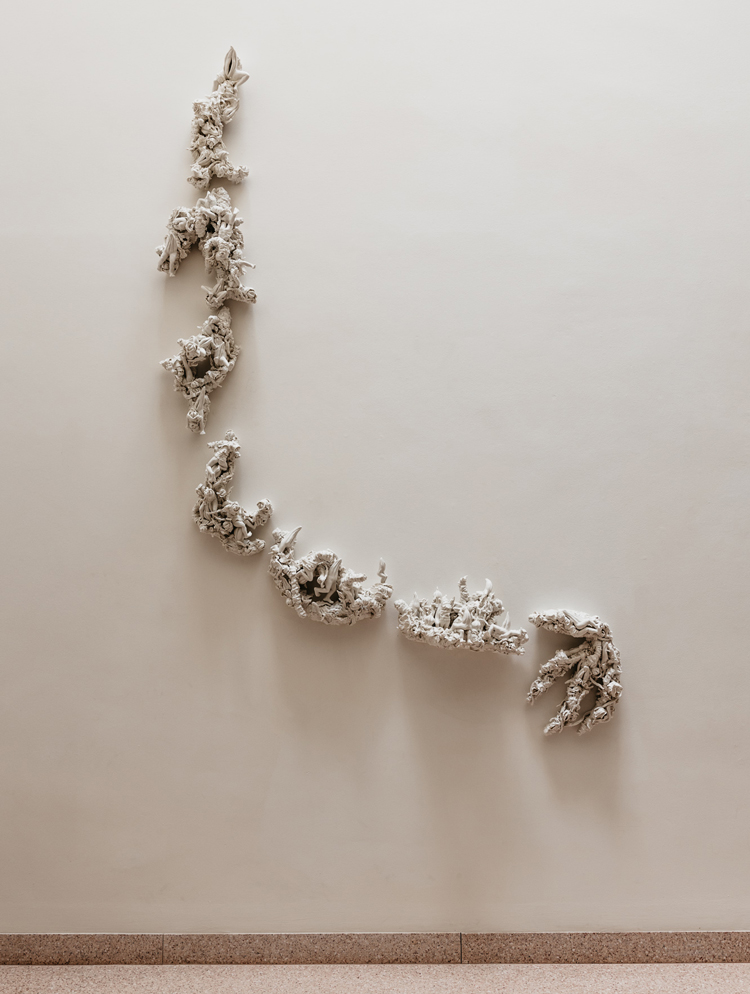
Rachel Kneebone, But For Now I Am Alive, 2006. Porcelain, in several parts. Courtesy of The David and Indrė Roberts Collection and the artist. Photo: Chip Creative.
The work is cleverly mirrored by the forms of Rachel Kneebone’s pristine-white, porcelain sculpture But for Now I Am Alive (2006): a swirling mass of flora and tiny body parts that creeps up the wall like untamed ivy, serene and erotic all at once. In the middle sits the most irreverent work in the exhibition: Cathie Pilkington’s Singerie (2004), a mis-en-scene of a party table, populated by monkeys wearing monkey masks and party hats. They look as if they have seen better days. The work may stretch the still life concept a little too far, but it is hilarious nevertheless.
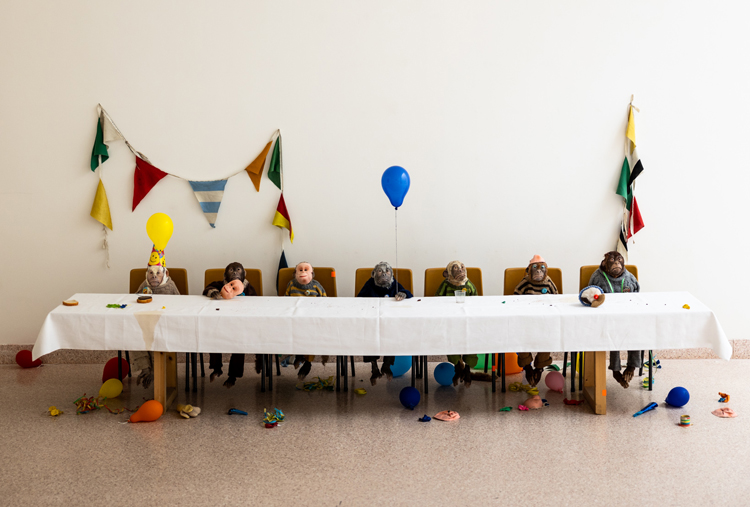
Cathie Pilkington, Singerie, 2004. Mixed media. Courtesy of The David and Indrė Roberts Collection and the artist. Photo: Chip Creative.
This is an exhibition that sharpens the mind: as soon as you start finding yourself at ease, relaxing into the clever visual pairings of works, you are hit on the head with a pun or a shock. The serene meets the sensual, the perfect meets the abject. The breadth of works is dizzying and it is best to let yourself be taken on the ride. There are a few subtle references to colonial history: Lonnie Holley’s Working in the House (2020), in which cotton gloves draped over a golden frame are an uncanny reminder of the domestic work of slaves; Hew Locke’s Golden Horde 1 (2006), made of toys, dolls, artificial flowers and beads, references Mongol armies descended from Genghis Khan (although this is another work that stretches the definition of still life a little too wide).
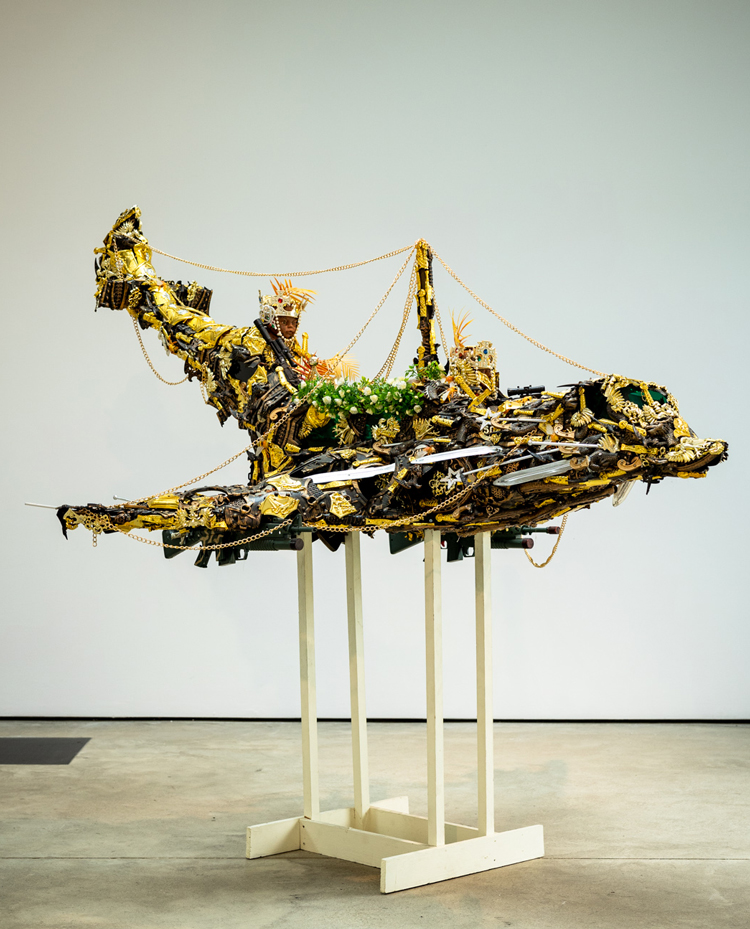
Hew Locke, Golden Horde 1, 2006. Mixed media. Courtesy of The David and Indrė Roberts Collection and the artist. Photo: Chip Creative.
Most unsettling is Rebecca Nassauer’s Fish Supper (2006), a slice of a table set against the wall in an Alice-in-Wonderland-like tableau, its white lace tablecloths and expensive silver cutlery betraying the dinner that is apparently served to the non-existent guests, each plate lined by a tiny piranha. My mind’s eye brought up the other works just seen: Pilkington’s monkeys, the luscious pearls leaking like vomit from the bright red lips in Marilyn Minter’s photograph Split (2003); Ori Gersht’s elegant bouquet exploding like bombed-out buildings in his 2007 video Time After Time: The Big Bang. Who holds the power? Where is the line between production and consumption? Who is the hostess and who are the guests?
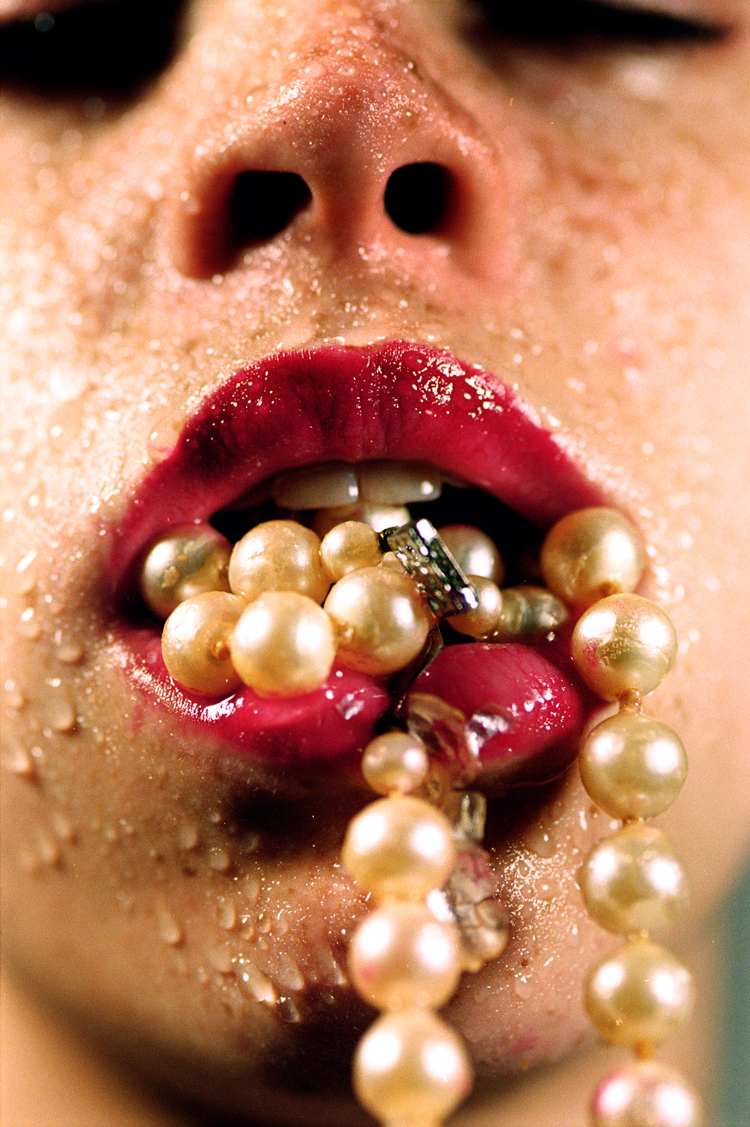
Marilyn Minter, Split, 2003. C-print. © Marilyn Minter. Courtesy of the artist and Salon 94, New York, Regen Projects, Los Angeles, and Baldwin Gallery, Aspen.
The remaining rooms return to more familiar themes of still life and nature, trace and absence and life and death. Lucy Skaer’s copper sculpture of a hare in flight is beautifully minimalist and at the same time possesses an almost electric energy. It reminded me of Brâncuși’s Bird in Space. Its pairing with a sleeping fox by Elisabeth Frink feels a little too easy, and it is when reading the label that I realise the exhibition’s only flaw. Frink’s 1968 work is one of only a few works from the Ingram collection included in the contemporary room, beside a few modern British still life paintings that feel underwhelming, their presentation too serious, their domestic scenes too twee. Instead, Louise Bourgeois’s sumptuous painting of lemons (Untitled, 1985), Patrick Caulfield’s vibrant and geometric bouquet (Study of Roses, 1976), and Matthew Day Jackson’s dynamic bouquet (Vase with Flowers, 2019) – all from the Roberts collection – refer to the history of still life, but they also bring something fresh. The Ingram Collection’s pieces would have been better left concentrated in the historical section, and in the brilliant video work at the end, Power Hungry (2020) by Valerie Asiimwe Amani.
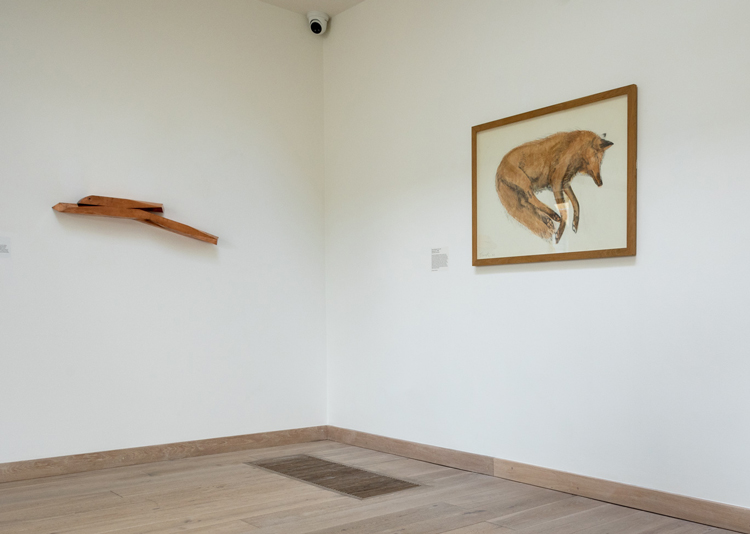
Left: Lucy Skaer, Hare, 2018/2022. Copper. Roberts Institute of Art; Right: Dame Elisabeth Frink,
Sleeping Fox, 1968. Watercolour and pencil. Chris Ingram. Photo: Chip Creative.
Overall, this exhibition is an admirably rich overview of a genre that turns out to give so much. “Something’s in the air,” said curator Yates Norton, with current or scheduled still life exhibitions everywhere from Hepworth Wakefield to the Courtauld Gallery to the Louvre. Still life, seemingly about the banal and the ordinary, not only offers to shed a light on the poetic qualities of the everyday, it can elevate it to new realms. It relates to our most private, most intimate spaces, and yet the objects we choose to surround ourselves with evoke people past and present, memories of travels, references to the marginalised and overlooked. The still lives of today not only contain Virginia Woolf’s “immortal apples and eternal eggs”, but extend to the messiness that surrounds them, to Roger Fry’s “frying pans mixed with palettes” and “the plates that held salad, other scrapings of congealed paint”. This exhibition shows us that still life is alive.